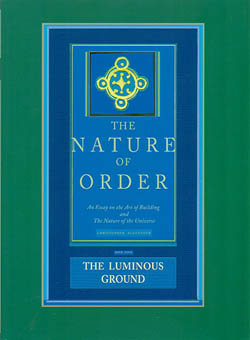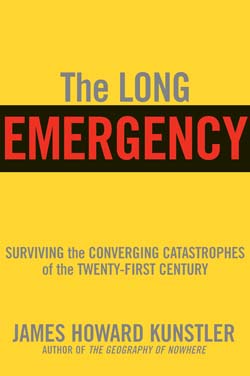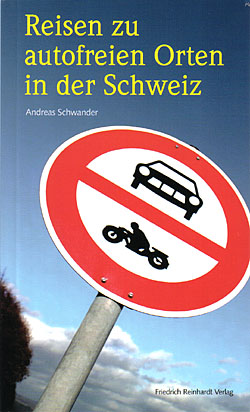
|
||
|
Issue 39 |
|
15 June 2005 |
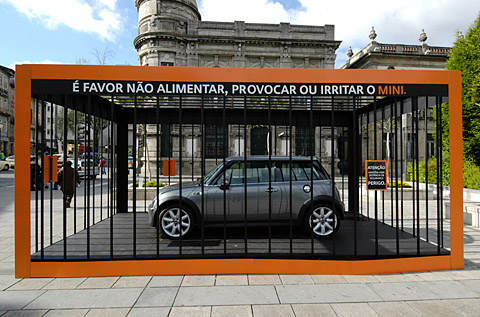 "Please do not feed, tease, or irritate the Mini." The car industry finally has a good idea: put them in the zoo. Braga, Portugal, May 2005 Announcements
Support for Carfree.comThe willingness of so many people to part with their cold, hard cash has made it clear that people value this site, and that helps keep my enthusiasm up!Luke G. paid for May & June 2005. Thanks!
Please see the Support Page if you can consider
making a contribution. Remember, your contribution helps keep Carfree.com ad-free!
(and we're starting to get offers. . . .)
World Carfree NetworkTowards Carfree Cities VBudapest will host Towards Carfree Cities V, July 17-23. This is the fifth conference in the series organized by World Carfree Network. Check the final program. Bogotá will host TCFC VI in 2006, probably in September.Participatory DesignJ.H. Crawford will lead a participatory-design exercise at TCFC V in which a 1:500 scale maquette of a full carfree district will be developed by conference participants, to test the generative sequences proposed in his next book. |
News BitsWalking City Conference in PortoIf one phrase could summarize the "Walking City" conference in Porto, it would be: "The need for restraining cars is greater than ever." This idea was repeated by most speakers during this conference, held June 2nd and 3rd in Portugal's second-largest city.Many success stories were reported. Powerful changes can be achieved by adopting the right policies. Small investments in public spaces that favor walking and restrict traffic often have the effect of releasing a burst of pedestrian demand that had previously been suppressed by traffic. While many of these conclusions are not new to many of us, it is important to realize that pedestrian advocacy is taking its first steps in Portugal. The conference was, therefore, an excellent and important opportunity to gather a rich group of speakers with positive messages regarding urban mobility. This is especially true at this moment, as Portugal is a nation in the midst of a grave financial crisis. The conference made it clear that very small investments in public space can produce quick and stunning results. The message is simple: widen the sidewalks and the pedestrians will come. Walking is still overlooked and misunderstood by most professionals and politicians. However, after a decade of studies and projects to encourage pedestrians, it has become easier to convey the linkage between walking and quality of urban life. It was interesting to note that references come with increasing frequency from multidisciplinary sources. For example, public health officials are joining the ranks of those who see the importance of improving conditions for pedestrians. Another point that was made forcefully was: collect the data! Most data concerning walking is fallacious. For example, the percentage of walking reported in official statistics would often be doubled if the statistics included recreational journeys and short trips. Gather data both before and after car restraint measures are implemented, to monitor increase in pedestrian flow, volume of trade, citizen satisfaction, and so forth. Most speakers were good to excellent; a few were inspiring, such as Jose Luis Cañavate (on the experiences of car restraint in Spanish cities) and Daniel Sauter (on the importance of "rousing the buried longings of people for livable cities, for the pleasures of walking, and the qualities of public space"). Rolf Monheim presented German data showing that a pro-pedestrian policy boosts city trade. Peter Bosselmann reminded the conference of the contributions of Donald Appleyard and William H. Whyte to the art of understanding cities through direct observation and data collection; his presentation showed real concern for design quality and social responsibility. Michael Loveday showed persuasive examples from England. Rodney Tolley gave a very convincing presentation on the economic value of walking. The conference was a good build-up for the Walk21 conference, to be held in Zürich this September. Unfortunately, the program was quite full, and there was little time for debate. One might wonder if we were preaching to the converted, or if the conference was attended by the hardest people to convince: politicians and shopkeepers.
Contributed by Mario J. Alves Somebody Finally Takes on Clarkson's Top GearTestosterone junky and hot-rodder Jeremy Clarkson, host of BBC's long-running Top Gear, is finally running into some resistance. Road safety organizations have called on the BBC to cut Clarkson's program, claiming it "glamorises speed" and encourages a "yobbish" attitude among drivers. Top Gear promotes "irresponsible driver behaviour and an obsession with big cars." The series, one of BBC's most successful shows, should be replaced by a program promoting "sensible driving in sensible vehicles."The Guardian article went on to say, "While we're at it, let's scrap cars that can exceed the highest speed limits by 100% or more." How about scrapping cars that can exceed the highest speed limits at all, and while we're about it, how about a return to the 55 mph or 90 km/hr limits from the gas-crisis days. Lots of fuel was saved, to say nothing of tens of thousands of lives.
"Scrap Top Gear, say road safety campaigners " Bicycle Best InventionThe BBC Radio 4 audience voted the bicycle "the most significant innovation since 1800." The bike won in a run-away victory, receiving 59% of 5000 votes. The next closest contender was the transistor, with just 8%. The car didn't even make the list, although the internal combustion engine drew 3% of the votes, just behind of the Internet at 4%.The poll also asked participants which invention they would most like to disinvent. Genetically-modified foods "won" this poll, with 26% of the vote. Nuclear power was the runner-up, with 19%.
"Bicycle chosen as best invention" Parking in BudapestA recently conducted opinion poll in Budapest showed that almost all the subjects were dissatisfied with parking conditions in the capital.Studio Metropolitana, the City Council's Urban Research Institute, conducted the research in the first months of 2005. Three hundred subjects, aged 18 or more, were asked by telephone to give their opinion concerning Budapest's parking system They were asked about the cost of parking, the possibilities of carfree zones, and how parking fees should be used. Nine out of ten people felt that parking fees should be used to solve parking problems. Nearly two-thirds of the subjects felt that only the companies collecting the fees are benefitting from the system. Only 20% of the people felt that making people pay for parking made it faster and easier to find a parking place. Most people felt that, to get parked cars off the streets, parking fees should be reduced at the parking garages so that people would leave their cars there. Two-thirds of those polled felt that people should enjoy free parking in the district where they live. A remarkable two-fifths of the sample supported the idea that cars should be banned from the inner city area entirely, although only 30% of the drivers shared this opinion. About 30% of the subjects of the study stated that if the parking fees were raised further, people would opt for public transport. At the same time it is interesting that more than one-third of those asked were dissatisfied with public transport.
Contributed by Lázár Ádám Taxing the ProfligateUK motorists driving the worst fuel-hogs may have to pay five times as much road tax as now. The proposal is part of an effort to reduce emissions of greenhouse gases in the face of rising demand for the biggest cars. The tax might rise to £900/year, which is, in fact, not a lot of money for someone prepared to spend nearly 50 or 100 times that much on the purchase of a car.As usual, fuzzy-headed thinking proposes to give those driving cars that emit the lowest levels of greenhouse gases an annual rebate of £150. Nothing for pedestrians, presumably. The Energy Savings Trust believes higher road tax would force auto-makers to offer more efficient vehicles. Apparently, UK cabinet ministers are under pressure to meet Tony Blair's promise to cut UK greenhouse gas emissions by 20% by 2010. The auto industry is expected to oppose this fairly modest tax, of course, even given the potential windfall for those buying small cars.
"Owners of Gas-Guzzling Cars to be Hit by Five-Fold Tax Increase" Stiff Congestion Charges Proposed for UKThe Blair government is supporting a revolutionary plan that would charge drivers as much as £1.30/mile to drive on the busiest roads. Transport Secretary Alistair Darling said that it was critical to build a political consensus on the merits of the policy. The plan would use GPS technology to charge drivers for using the roads, with the charges adjusted depending on the level of congestion. On lightly-travelled rural roads, the charges would be as little as 2% of the charges on the most congested roads at peak hours. Studies have suggested that the system could reduce congestion on Britain's roads by nearly half, along with an estimated £10 billion saving in the economic costs of road congestion. The system could enter operation in 2014. As with most schemes of this type, there are serious privacy issues that probably will receive no more than window-dressing treatment. It's the terrorists, you know. . . . As long as Britain is taking the full-blown big-brother route, they might as well build in some useful safety features. All of the technology needed to physically enforce speed limits will be available in the hardware required for congestion charging.
"Drivers to pay £1.30 per mile " Reducing Particle Emissions Would Save Lives, MoneyThe EU would see large health gains and related health-care cost savings if particulate emissions are actually brought within the limits established in 1999, according to a study by the WHO. The very finest particulates, those 2.5 micron and smaller, reduce life expectancy across the EU by an average of 8.6 months. By contrast, implementing the EU limit on particles up to 10 microns (PM10), in effect since January, will save only 2.3 months of life.Some EU countries are struggling to comply with the directive. Several German cities are already in breach of PM10 limits. Compliance would save tens or even hundreds of billions of Euros. Look for trouble in Italy as well, which has very high pollution levels in the Po Valley.
"European Union can save up to €161 billion a year" Quiet in Italy, At LastIn order to put the brakes on the most common petty criminals, Naples will put severe restrictions on the hated motor scooter, responsible for terrible noise and air pollution in nearly every Italian city. Bag snatchers love the scooters' speed and high maneuverability in narrow streets and alleys. Naples is a city of chronic unemployment.Police have cracked down on scooters in the city center in hopes of making Neapolitan streets both safer and quieter. "Our goal is to give tourists and citizens more security," said traffic counselor Nicola Oddati. Under the law, non-resident riders will have to either leave their scooters behind or walk them through the city with the motors off. Fines are low, although confiscation of the scooter is a risk. Reaction has been mixed. One scooter driver said, "The truth is that we live in an absurd city. It is true that something needs to be done about crime but, as usual, this way only the innocent ones will pay the consequences."
"Scooter Crooks Face Crackdown" Ozone ProblemsThe Arctic ozone thinned this winter to the lowest levels ever recorded. It had been hoped that the ozone layer had started to heal. Apparently climate change is exacerbating ozone depletion. Scientists now think it may take another 50 years to resolve the problem.The increasing number of winter stratospheric clouds appears to be the culprit. They provide a reaction bed that permits rapid destruction of ozone to occur. For three months starting at the end of November 2004, there were more clouds for longer periods than ever before recorded. The atmospheric lifetime of ozone-depleting chemicals is very long and will remain at dangerous levels for half a century. Greenhouse gases trap more heat in the lower atmosphere, resulting in a cooling of the stratosphere. As a result, ice clouds form 14 to 26 km above the earth, in the same band as the protective ozone. Excess UV radiation threatens phytoplankton, which stores huge amounts of carbon in the oceans.
"Ozone layer most fragile on record Ford, GM Bonds Get "Junk" StatusTwo of the world's largest corporations, Ford and General Motors, recently had their bonds downgraded to "junk" status, indicating that ratings agencies see serious problems ahead for the auto manufacturers. GM is the biggest firm ever to have its debt rating cut to "junk." Its debt is a staggering $290 billion. Ford's is "only" $160 billion. Ratings agency Standard & Poors cut GM by two ratings levels and Ford by one.Cited in the downgrading were dwindling domestic market share (it looks like people finally have enough SUVs), intense international competition, a poor product mix in the face of rising gas prices, and rising raw material costs. In particular, the soaring cost of health insurance is crippling both companies, with health care adding an average of $1,500 to the price of every car they sell in the USA. Pension costs are another large burden. "GM's financial performance has been heavily dependent on the profit contribution of its SUVs," according to analyst Scott Sprinzen. "Recently though, sales of its mid-size and large SUVs have plummeted and industry-wide demand has evidently stalled, partly because of high gas prices." Ford is suffering from the same problem.
"GM and Ford plunge to junk status: UK Conservatives Outflank Blair on EnvironmentMichael Howard, leader of Britain's struggling Conservative party, attacked Blair's record on climate change in an article recently published in The Guardian. Blair has made recent scrambling sounds as he attempts to make up for the previously promised action his government has failed to take. Howard looks set to capitalize on Blair's failure.Howard said: There are those who say the risks have been exaggerated. To such people I say this: if we go your way and you are wrong we will save money in the short term but incur an immense penalty in the long term; if we go my way and I am wrong we will incur costs in the short term but with the reward of greener, cleaner technologies for saving and generating energy. Such technologies would improve air quality, avoid acid rain and reduce our dependency on imported gas and oil.and continued: This isn't just about us and the Americans. The sobering fact is that China is building 1,000 MW of coal-fired generating capacity every two weeks. Before long India will be doing the same. If we don't develop the technologies that will enable these emerging giants to generate power cleanly then the war against global warming will be lost.Given Blair's equally awful record on other important issues, maybe it's time to hope for a Conservative victory in five years (gulp!).
"And what if the sceptics are wrong? World Naked Bike RideA total of 54 cities around the world held nude bike rides to protest oil dependency. In London, more than 100 cyclists participated, with "dozens" riding in Chicago. (Wolfville, Nova Scotia, police "were on the lookout Saturday for a bunch of nude cyclists" but failed to find any.)This year's battle cry was "stop indecent exposure to vehicle emissions!" The rides were also intended to counter the "destructive effects of car culture."
"Cyclists bare all in oil protest" The End of the Oil ReportThis is the last edition of The Oil Report. We are dropping it because the issue of peak oil has gained broad public attention in the past year or so. Carfree Times need no longer focus on this question. Oil prices have climbed sharply in the past two years although they remain well below the peaks of 25 years ago (in real terms).R.W. Hollier and I have written an energy policy white paper, "Energy Future: Nuclear Power, Fossil Fuels, Renewable Energy, Conservation, and Carfree Cities," on energy sources and conservation strategies. This is an early draft, and the paper will be revised and expanded. Nuclear power is now back on the agenda after becoming the energy stepchild nearly 20 years ago after the terrible accident at Chernobyl. The most sensible strategy is the one being most ardently resisted: curbing energy consumption. It seems that there is no corporate lobby to support this approach, while the nuclear industry and those promoting non-conventional sources of fossil fuels have money to burn for the legislation they want. We'll summarize here the state of play and consider this matter in future issues of Carfree Times only in passing. We do hope, however, to publish an energy white paper in the near future. ASPO Conference in LisbonI attended most of the conference sponsored by the Association for the Study of Peak Oil and Gas that was held in Lisbon May 19-20. This conference was quite well attended and drew politicians like Michael Meacher (Blair's former Environment Minister) and Ed Schreyer (former Governor-General of Canada), and a couple of serving MPs. This shows that politicians are starting to pay attention to this issue. The conference was also well covered by bloggers and low-budget documentary film makers.Most of the big names in peak oil were there, including some contrarians who think conventional oil will peak in 2040 at levels of production well above those of today. A considerable amount of attention was paid to alternative sources of fossil fuels and ways of limiting their emissions of greenhouse gases, such as the sequestration of CO2 from coal-fired power plants. Nuclear power was also a hot topic of discussion. I'm betting with Colin Campbell and Matt Simmons that peak oil is here now, give or take a few years. The exact timing doesn't really matter much, and the decline will not in any case be precipitate (unless Hubbert's model is too optimistic, which history has not so far shown to be the case). Instead, it is rapidly increasing demand that is causing prices to rise, together with the failure of Bush's Middle East policy.
Abstracts and communications are available on
the conference web site.
Simmons on OilI briefly met Matt Simmons at the Lisbon conference. He is a nice fellow who was quick to correct me on one point: he was not a member of the Cheney energy commission but a consultant to it.He has been at pains lately to debunk the myth that the Middle East is awash in oil. True, most of the world's remaining supply is located there, but it's by no means an inexhaustible resource. It is, in fact quite tightly concentrated in a small part of that turbulent region. He has studied Saudi Arabia's oil resources in great depth, using technical documents amassed over the years and apparently not consulted by other researchers. The world's largest oil field, Ghawar, has supplied more than half of all Saudi oil for the past 50 years. He is concerned that production from this field may be poised to decline, partially as a consequence of pumping the field too hard for too long. This will result in more oil being left behind than would otherwise have been the case. Simmons believes that Saudi Arabia is already well advanced into secondary recovery, with tertiary recovery getting under way. What this means is that Saudi oil will become more expensive to produce and that production rates may soon top out. Simmons thinks that Saudi promises to increase production to 15 mbd (million barrels/day) from the current 9 are not possible to achieve. Simmons claims, in fact, that Ghawar is the only really good Saudi reservoir; the others are technically difficult. He thinks that once Ghawar peaks, it will be all down hill for Saudi Arabia, and that this will represent the peak of global production - without increasing production from Ghawar, it will be impossible to offset declines elsewhere. Simmons calls for greater transparency in Saudi oil matters, something that is unlikely to be forthcoming. As many experts have said, the peak of oil is only visible in the rear-view mirror. Time to start looking back.
See Simmons's presentation: Deep WellI work for a major international oil company, in the exploration area. Peak oil is a fact - we are all on the back side of the bell curve.
Anonymous
This writer, whoever he is, probably doesn't work for the FBI. He went on to make a number of points that have not often been so clearly stated:
He concludes: It is not a question of "if" peak oil has occurred - it has! The better question might be "when are the crows coming home to roost?" When will we begin to actually experience the shortages and the rising prices? I think we might make a decade, if everybody plays nice across the world. But when has that ever happened when something got scarce?Nothing he said is at odds with anything that I heard during the Lisbon conference, except for the few people who think that we somehow still have years to go before the peak.
"A letter from oil exploration insider" Oil at $380 in 2015?The French investment bank Ixis-CIB warned that crude oil prices could reach $380/barrel by 2015 (apparently not adjusted for inflation). Analysts said that demand over the next ten years will considerably outstrip supply. They foresaw no likelihood that shortages would be made up by alternatives, as they had not yet been developed and deployed, "thus the world will still need to rely upon traditional fossil fuels."China will add greatly to the world's rising demand for oil. Rapid urbanization plus demand for housing, cars, and transport will increase energy consumption in China, whose economy has been booming for years.
"Will oil strike $380 a barrel by 2015?: |
Editorial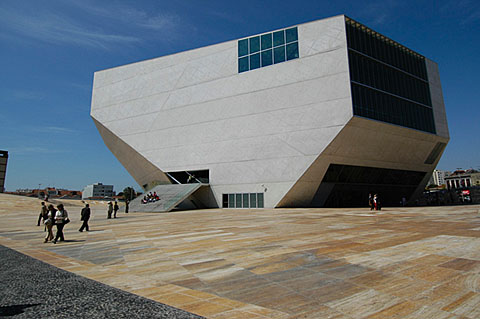 Casa da Música, Porto, 2005 Rem Koolhaas drops a load of "art" Porto just blew €100 million on this piece of junk. Poor Porto. It will be many years before they will be able to afford to tear down this monstrosity and build something better.
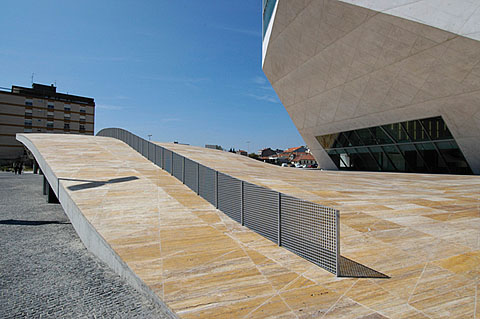 Artificial cliff I don't doubt but that the contract was awarded in the usual way. Architects are chosen to form a jury to select one of their peers to design an important new building. Since Modernists, Post-Modernists, and Deconstructivists basically have a stranglehold on the architectural institutions, their buildings are very nearly the only kind that get built. The public gets a failed attempt at "art" every time, when all that is needed is a building that works, fits in with its surroundings, comes in on-budget and on time, and threatens no harm to anyone. To add insult to injury, when these buildings run way over budget, as they often do, the architect, commonly working on a percentage fee, gets more money.
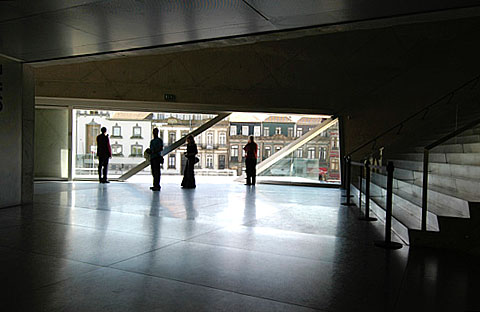 Angled front door It's too much to expect at the moment for groups of ordinary citizens to replace architects in making these decisions, but could we please at least appoint a citizen jury to come up with its own rankings of the proposals submitted? At the end, we would compare the rankings of architects with those of ordinary people. I expect that in most cases the rankings will be wildly different. This would at least serve to put the politicians on notice that the results of their selection process are not pleasing to their constituents. Eventually, we might see a return to civilized buildings that show some respect for citizens and their cities.
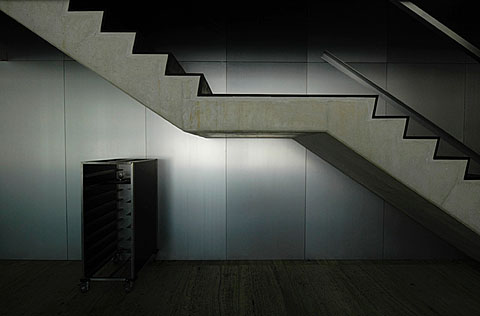 Head-high stair landing
Koolhaas should never design another building like this. Neither should any of his
contemporaries, busy "deconstructing" several thousand years of safe, satisfactory,
and gratifying architectural practice.
Books
I am glad to be able to say that Book Three is a more accessible and less frustrating book than the first two. If you are going to read only one of the four, I think you should make it this one. I have skimmed Book Four: The Luminous Ground and will not review it - it is too mystical for me to attempt. The focus of this book is on the creation of centers, and most of the discussion is reasonably practical and specific. However, we still have cases of the post-hoc application of a method that was surely not used in history: What is vital is that this process of building St Marks square was all made of center-creating actions, all were processes based in one way or another on the fundamental process. Most of the entities that were created there, large and small, were living centers that have unfolded over time to make the whole more and more vibrant, and it is this which gives the place its living character. (7)It may be true that the processes were center-creating, but Alexander gives no evidence that those designing this square had any awareness, even if in different terms, of the kind of process that Alexander proposes. I find this disturbing, as my own view is simply that our forebears were able to think directly in wholes, the kind of process I have seen unfold in Bali. There is not a lot of rational thought; there is simply perception followed by action, guided by understanding. I would myself love to be able to operate in this mode (and have in a few cases reached this height), but this is not a normal form of awareness in the West. In fact, even Alexander himself does not normally think in terms of centers: I may . . . ask what shape of bridge, what shape of span, what shape of tower, is harmonious with the land-forms and water that it passes over. Analytically, I may well be looking for the center (in the space between the bridge towers) which most enhances the water which the bridge is passing over. Am I thinking about it this way when I do it? Generally not. I try to make the bridge in the best way I can, and rarely talk to myself explicitly about the centers - unless I feel I am going off the track. . . . (13)Mostly, in fact, he is being intuitive. That is the crux of the matter. Within a given society, our intuitions as individuals are no longer congruent: while two people may have an intuitive sense about a particular design question, these notions are not uncommonly at odds with one another today in the West. Alexander speaks of the "terrible loss of belonging our contemporary process inflicted on society" and continues: The loss has been inflicted on us and on our fellow human beings. Belonging, although it was common in traditional towns and villages, is missing in far too much of modern society. The forms of the environment we have learned to create in modern times have caused us to lose the sense of true connection to ourselves and our society. That has happened, in large part, because of the nature of the space we have created. It has happened because the public space of our present-day cities, both legally and metaphorically, no longer belongs to us to any deep extent. (31)A little further on, he says: All of my life I have been inspired by what happened in traditional society and marveled how much people all over the world knew about essential things. In traditional society, up until the onset of this century, the space that existed between buildings was like the living room of society. It was the place where people did things, got together, felt comfortable. (34)I have been overwhelmed by this same sense, in Bali, in Venice, in the carfree medinas of Morocco, and I believe that this change, this loss, is profound. The feeling in the few spaces I have encountered where "belonging" is still real and present is stunningly different from the usual run of cities in the West. We need this back, and fast, if we are to save our societies. And, no, I don't think this overstates the seriousness of our predicament. Five years ago, I had a long conversation with Chris Alexander and gave him a copy of Carfree Cities. I believe that he was gratified that I had adopted so many of his ideas, but then, as now in this work, he did not accept the carfree city as a good solution for society. In think that this arises in part because of his own preference for buildings at densities no greater than one-third of what I propose. He has, however, worked at almost the same density as the Reference Design for Carfree Cities (FAR = 1.5), while still accommodating cars. This is no mean feat, but the sacrifices he had to make to accommodate cars are large. See his discussion of the proposal for a dense apartment project in the Shiratori district of Nagoya, Japan, which reaches a FAR of 1.44 (pages 316-324). Yet he is acutely aware of the problem of the car: In our century, the loss of control and loss of belonging started with the car. The car of course is a wonderful thing. I, we, almost none of us, would willingly give up our ability to have cars and get what the car can get us because it creates this phenomenal kind of access to everyone and everything, which is so valuable. But at the same time during the last century, because of the car and trucks, nearly all streets have been taken away from us. And for property reasons, too, . . . even the common space that is provided for pedestrians, emotionally does not belong to us. (35)We need this space back, and the only way to get it is to take it away from cars. I don't believe that any of the compromise solutions really work, really get us back to owning public spaces. Alexander understands that the most important spaces are carfree: When living processes are applied systematically to the public space in a human community, they will - because of their emphasis on the formation of strong center - generate a system of articulated, useful, coherent, and mainly pedestrian spaces. (70)At another point, he says: The temptation to say - keep the cars out, make it all pedestrian - is far too harsh. In many places, it is just the cars which create the life in a place; the freedom of access that they permit which brings vivacity, energy, imagination. But undoubtedly, the pure pedestrian space in which there are no cars is also vital, allowing us to walk, dream, play, unhurried and uninterrupted. (77)I think it is becoming increasingly important to demonstrate mathematically that it is impossible to provide the kind of access that brings life to places by using cars, at least above a certain threshold population. (I have always granted that, in rural areas, cars are a great boon to social life.) Yes, we need the people. It is the people who bring places alive; the cars are at best incidental and at worst in the way. Alexander has devoted much attention to hiding the cars, to keeping them from ruining our spaces. In fact, my own pursuit of the carfree city arose out of the conviction that you can't really apply A Pattern Language at a city level and still allow more than incidental use of cars. The following patterns apply, directly or indirectly, to hiding or mitigating the effects of cars:
I think Alexander suffers from a common problem: he is simply unable to imagine his life without frequent use of a car. This points up a pressing need in the promotion of carfree cities: we need to show people, on a case-by-case, day-by-day basis how their lives would change if they lived in a large-scale carfree environment. We need to show people that there is life after cars. Much more life, in fact. Alexander mentions the quality of public spaces that work and says, "The places which have this belonging have a rubbed-in, used quality. This quality is rough and ready, not pristine." (63) Take, for instance, Venice, which has more than a rubbed-in quality - it has a nearly worn-out quality. This wear, however, only infrequently damages the sense of that city as a fabulous place to be alive. The question of what informs design is, I think, central to the question of achieving great urban areas. There has to be a reason why things are the way they are. Good superficial appearance is not enough. Alexander says that differentiation is the response to a specific site and to a specific place within the site. Buildings right next to each other are in a different situation and should emerge to show this difference. (79) The unfolding process, in the case of a town, is complex and difficult. It cannot always go on, romantically, "by itself." It needs guidance of a disciplined kind, through which the emerging space is defined, agreed, and visualized in some public and sharable form of a three-dimensional model. Once we have a way of doing this, the whole thing can go forward easily enough. (93)Yes! Alexander then puts his finger right on the problem: I have found in all the years of my professional life that the shape of public space needs to be taken as seriously as the shapes of the buildings, but this is very hard to implement, because our present consciousness focuses more easily on building-volumes than on spaces. (95)Do we actually need a literal change in consciousness to realize this? Did we, in fact, accept a change in consciousness, early in the industrial revolution? Was this the undoing of it all? It is high time to answer this question. Jonathan Hale's The Old Way of Seeing: How Architecture Lost Its Magic (And How to Get It Back) broached this question ten years ago, without really answering it. No one else seems to have taken up the challenge. We must now understand what it was that we gave up for cheap products and whether that was a devil's bargain. Regarding the process of design, the laying out of built areas, Alexander thinks that it must be done on the site itself: In my experience, this work must be done on the land itself. One must imagine the building, when standing there, waiting, really for the form and volume and position of the new building to come to the mind's eye, as if it were already there, and as if you can see it, just by standing there. Usually, after seeing it in this way, we also flag it or mark it with flags or poles or strings, so that we see it more clearly. (158)I am not certain that it is absolutely essential to design on site, but I do believe that this is the best possible approach. (This summer's test in Budapest of the generative sequences that I am developing for carfree districts will use a maquette, not on-site marks, for the simple reason that we have neither the site nor the time to do it that way. I acknowledge the maquette as an inferior process but think it will be adequate to demonstrate the workability of the sequences I will propose.) Alexander discusses at some length the use of flags to place buildings on a site. His preferred sequence is to stake out the buildings on site, build a maquette based on this layout, adjust the stakes in the field, and, when everything is right, to survey the stakes and use that survey to draw a paper plan. (177-180) Regarding the vital question of how to elicit people's strongest feelings about their environment, he says: If you ask me how to get the deepest stuff from people, the stuff which matters most, I would not have them meet all together, under conditions of imagined communality. I would rather talk quietly, to one person at a time, drawing from each individual his, her, their most important feelings, and their most authentic visions. (268)Then comes the blockbuster: "This kind of stuff, if real, is almost always universal." (268) If he is correct in this, it is a profound realization. It means that we can expect fairly ready consensus among large numbers of people regarding the aspects of design that are most important. I am a little too scared to believe this, especially in the context of today's highly-splintered American society, which is why I am proposing a rather cumbersome process to identify "values clusters" among groups of people who will then, on the basis of their affinity, form neighborhood groups to design and build urban spaces that fit them and their values. Yodan Rofé, a colleague of Alexander, evaluated the reaction of residents to their neighborhood: The health or lack of health of various places, meter by meter in a neighborhood, changing every hundred feet or so, throughout the neighborhood, is widely recognized, felt more or less the same by everyone, and is an objective reality. . . . He took an area of several blocks and asked people to mark the good places, the bad places, and the in-between places. The correlations between what different people saw and how they evaluated different places, when making diagnoses, was very high. . . . Yodan was able to prove what I had long suspected: the diagnosis of good and bad, pleasant and unpleasant, life-giving and life-destroying, is firmly established and objectively real, even in something as minor as the way the character changes from place to place along a street. (339)I am still reluctant to believe that this diagnosis translates into easy agreement on how to change a place to make it good, at least in mixed cultures like the USA. If it is true, this is a wonderfully hopeful finding. Alexander has developed morphological sequences, which, when correctly followed, lead to the unfolding of a design, specific to the site, that achieves wholeness and beauty while meeting needs: The answer, the solution to the difficulty, lies in the use of the fundamental process, applied over and over again, focusing on very limited, tiny decisions taken one at a time in sequence. Why is this critical, and why is this different? Because when we lead the group consensus through very small steps and try to reach decisions about these steps one by one, one at a time, the steps can be made so small and so particular that for each step the thirty of us will find it possible to succeed in deciding among the possibilities, what is best, by checking versions, testing them, trying them out. (357-358)There is a problem here, however: who decides what the sequence is? I think there can be no question but that the sequence exerts a huge influence on the result. (It is possible that if the sequence is defective, it is self-cancelling, as the required rapid attainment of consensus may be foiled, thus flagging the sequence as flawed.) The idiom that is to be used on a given project greatly affects the final result. The same idiom must be applied throughout a project if real harmony is to arise: The intense feeling of uniqueness in these houses comes, in part, of course, from the fact that each house was generated, uniquely, by the family who lives there and according to the demands and character of the particular bit of land where they placed the house. But it comes no less - I might say that it comes even more - from the fact that all three houses were built the same way, with the same rules of the game, the same construction details, the same approach or feeling in the way that they were built. (381)This is a vital point, and one that wanted further development in this book. It seems that certain aspects of design are common within any given culture: "But in any case, what is sure is that in almost every traditional culture, patterns evolved for elaborating the latent center of the eave [of a roof]." (457) I worry about the applicability of some of Alexander's practices in the real world. He seems to be free to spend days fiddling with quite minor details in the design of a building: John Hewitt and I spent days looking at the way to make those bricks work for that particular corner. If there had been a standard post at the corner, we could not have achieved this specificity you see at the corner. (489)This, I think, is where "styles" produce real efficiencies, providing that the styles are good. You can simply look up how to design a building in, say, the Ionic style. The rules are all there in Adam's Classical Architecture or Fletcher's A History of Architecture. It is only necessary to scale them for a specific building. I really don't think we as a society can afford to have people of Alexander's talent spending days wresting with the arrangement of a few bricks in a corner, unless that solution is going to be generalizable to a style. On the other hand, I am very sure that Alexander is exactly on the money with this statement: During the course of their work with me, the one thing which all my apprentices have to do is to make judgments in real things - while these things are being made. And the one thing which astonishes them all is the extent to which life - the deep field of centers - is created, or destroyed, by minute subtleties of dimension, shape and color. (496)I have seen this over and over in my own work. Even in the exact example that he gives, of the design of an arch being spoiled by an error of half an inch. I have seen this in a group of finished buildings, where someone forgot to specify the exact springing of an arch (or got it wrong). Exquisite sensitivity to details is essential to good design. Alexander contends that we may have to accept a certain rough-and-ready character in the finished product if we wish that it be precisely adapted to its circumstances: To get exactness of adaptation, there is a price to pay. The price is roughness. To get the perfect adaptation which is required by the unfolding of a field of centers, you cannot avoid a certain roughness in the results. This is because, to make each center come to life, there needs to be give and take that permits the needed complex superposition of relationships: hence uneven, unequal spaces, lines, straightness, curvature and so on. It is not possible to get perfection in the field of centers - true life - and also have the shallow mechanical perfection which 20th-century people often seemed to demand of buildings. (508-509)It may even be that mechanical perfection is the enemy of real liveliness. The last part of the book concerns itself mainly with materials and techniques that "re-establish building as an art." (518) He is not adverse to applying the power of computers and modern manufacturing processes to achieve the results he seeks and gives interesting and convincing examples of this method in practice. He wants methods that allow direct response to the emerging building. The details are not all "cast in concrete" in the drawings; they are allowed to emerge on the site as the building develops. He discusses at some length the changes in the contracting process that are required to allow this to happen. I am not convinced that these methods are realistic, but I am quite sure that they would give us better buildings if they could be implemented. Alexander has apparently had some success in this. Alexander closes with this moving plea: . . . the most frightening thing of all is the loss that people have of their own feeling.This is a truly fearful assessment. I think it is exactly correct.
This is the final volume in The Nature of Order. I have only skimmed this one and will not review it.
From the publisher's blurb: With his classics of social commentary The Geography of Nowhere and Home from Nowhere, James Howard Kunstler has established himself as one of the great commentators on American space and place. Now, with The Long Emergency, he offers a shocking vision of a post-oil future. The last two hundred years have seen the greatest explosion of progress and wealth in the history of mankind. But the oil age is at an end. The depletion of nonrenewable fossil fuels is about to radically change life as we know it, and much sooner than we think. As a result of artificially cheap fossil-fuel energy we have developed global models of industry, commerce, food production, and finance that will collapse. The Long Emergency tells us just what to expect after we pass the tipping point of global peak oil production and the honeymoon of affordable energy is over, preparing us for economic, political, and social changes of an unimaginable scale. Are we laboring under a Jiminy Cricket syndrome when we tell ourselves that alternative means of energy are just a few years away? Even once they are developed, will they ever be able to sustain us in the way that fossil fuels once did? What will happen when our current plagues of global warming, epidemic disease, and overpopulation collide to exacerbate the end of the oil age? Will the new global economy be able to persevere, or will we be forced to revert to the more agrarian, localized economy we once knew? Could corporations like Wal-Mart and McDonald’s, built on the premise of cheap transportation, become a thing of the past? Will the misguided experiment of suburbia—considered a birthright and a reality by millions of Americans—collapse when the car culture becomes obsolete? You can also read Kunstler's article with the same title: "The Long Emergency: What's going to happen as we start running out of cheap gas to guzzle?"
I've been thinking that it was about time for guidebooks with a carfree focus to appear, and here one is. There are more carfree towns in Switzerland than you might think, and some of them have devised quite innovative methods that allow you to reach them. It's a small book, to fit in your pocket. Given its Swiss origins, it's not surprising that it's beautifully printed and full of excellent color photographs.
This book was received from my publisher right at press time. It's off the carfree topic but probably of considerable interest to many greens. (The topic is one of which I was almost entirely unaware.) If someone would like to review this work for the next Carfree Times, please send mail. The following text is excerpted from the publisher's blurb: The new, extremely large mining projects of the 21st century will be financed by global private capital, rather than the world's citizenry through public funding. The political, as well as geographic and financial control of resources is moving inexorably into private hands. A major consequence of this political-economic transformation is the enormous growth in Political Risk Insurance, intended to cover foreign investors for losses due to nationalization, restriction on financial transfers, breach of contract, war or "revolution." It is made available predominantly out of public funds by a handful of institutions. Mining and the Politics of Risk is a key campaign tool for the communities at the receiving end of these mega projects. Roger Moody is a leading authority on the impacts of mining and the mining industry.
|
| Editor | J.H. Crawford |
| Send e-mail | |
| URL | http://www.carfree.com/ |
Back to Carfree.com
Carfree Times Home
Back to Carfree Times Issue 38
Forward to Carfree Times Issue 40
About the book: Carfree Cities
E-mail
carfree.com
Copyright ©2005 J.Crawford


